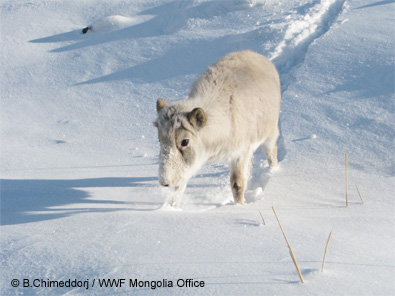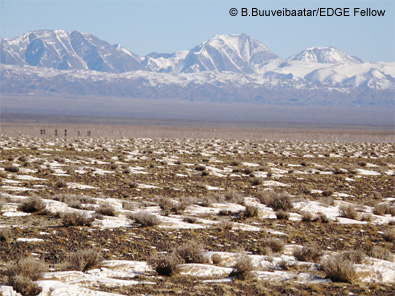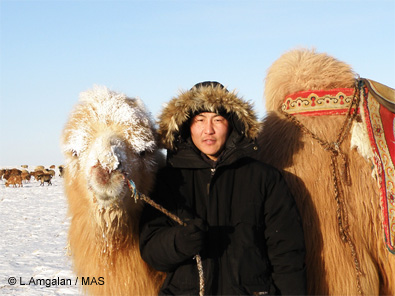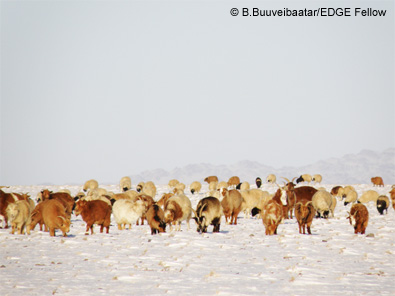While we have all been enjoying the unusual amounts of snow in the UK, one of our EDGE Fellows, Buuvei, has been braving much more severe winter conditions to monitor the saiga population in Mongolia:
During 17-29 January 2009 we conducted field work in western Mongolia: Shargyn Gobi, Khuisyn Gobi, and Durgun Steppe. The major goal of field work was estimate a number of saiga population using fixed transects. Mongolian Academy of Sciences (MAS) and WWF Mongolia Office participated in population assessment.
We counted 234 groups of 1205 saiga during the survey. Group size of saiga was ranged between 1 and 62 animals. Besides Mongolian saiga, we counted 19 groups 113 goitered gazelles. Surprisingly, we also counted 2 groups of 7 Mongolian gazelles (Procapra gutturosa) in Shargyn Gobi, which is ever recorded in this area. Local people say that deep snow and inclement weather forced Mongolian gazelles to migrate 300 km south from their current range in search food and shelter from blizzard. It was incredible for us to see all of three antelope species together in same area.
Dzud, a Mongolian term, refers to a variety of winter conditions that destroys or prevents access to grazing material, preventing animals from eating and thus surviving during the winter months from October to May. Conditions that lead to dzud include heavy snowfall (white dzud). Dzud has killed a substantial number of livestock in Mongolia. Mongolian saiga also have experienced a dramatic decline in their numbers during the dzud in 2000 and 2001. During this period saiga population plummeted by 80%. Forecasters are predicting that the dzud may occur this year again in Mongolia. But, the situation was better than we expected in Shargyn Gobi where most of area covered patchy snow. And, we did not encounter with dead saiga.
Winter condition in Khuisyn Gobi was worse and a southern part is covered by deep snow (snow depth reached up to 50 cm in some place). In Khuisyn Gobi, we encountered more than 10 dead horses. According to locals, 3 days of blizzard and cold temperature (during the night -40°C) have killed especially horses. Fortunately, we also have seen no dead saiga. But, if snow fall again occurred the situation will be becoming to dzud.
If you would like to support the research and conservation work of EDGE Fellows, you can become an EDGE Champion or donate here.



